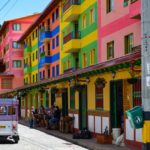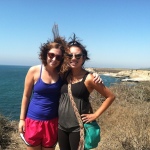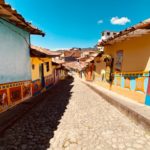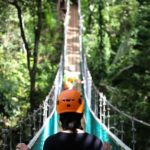Why It Was So Hard to Leave South America

I lost my hat, the hat with “nine lives.” It is now somewhere bobbing up and down in the drifting current off the coast of Cartagena. For some foolish reason losing that $30 Rip Curl hat felt like having a prized possession stolen such as that iPhone 5s, passport, or DSLR camera.
I guess that hat has been everywhere from the foul dorm room of our Buenos Aires hostel for a month to the coast of San Juan del Sur in Nicaragua, to the eternal salt flats in Uyuni, to the lingering wafts of Sillpancho that percolate every crevice and pore of my house in Cochabamba with my second family, to the top of mount Machu Picchu lined in beads of sweat from my forehead, to the ungodly boat rides of the Galapagos and finally to the Afro-Caribbean Colombian coast where the passion for salsa, fish and bronzed skin is endless.
Like cairns on a trail, carvings on a tree, Hansel and Gretel’s bread crumbs, I had left pieces of myself in every place where my feet had pressed against the earth.
That hat has been everywhere and now it’s somewhere, lost, separated from me. I interpret it as some sort of sign, reminding me of the person I was, the person I have become but most importantly a quiet, unassuming indication to come back and retrieve what I have left.
So here it is, the premature ending to my supposed year-long adventure in South America. I moved to Colombia two months ago absolutely clueless, which was a problem and a blessing. I spent two weeks in an orientation in Bogotá where all my pre-conceived notions of Colombia were blown by the fact that I was shivering in my grandma knit sweater and scarf. I think I asked myself multiple times, what exactly I was doing there. The one silver lining was meeting some ridiculously friendly and bacano Paisas (people of Medellín), whom I promised I would visit at some point. Somehow I convinced myself that life in Villavicencio would be different.
When that day came, I kissed warm showers, vegetables and my grandma sweater and scarf goodbye and exchanged them for cold showers under a hose, a plethora of meat, and an umbrella. It rained so much in Villavicencio that rivers formed in the gutters of the sidewalk, making it nearly impossible to cross the street without feeling like I was in a raging shallow river.
The students at SENA were the most wonderful, hard-working, and incredible people. Their enthusiasm, drive and amicability made them a joy to teach.
I came here to teach English, but the program was not ready for volunteers. It was so disorganized on so many levels that it made teaching difficult–my life was overcome with stress and my nights were sleepless. The expectations held the weight of elephants–our only qualification was that we could speak English fluently, and yet we were expected to self-design a curriculum from a list of grammatical topics and English level guidelines. It was truly a job for a teacher with an education background and English teaching experience.
But the students kept me going. The students at SENA were the most wonderful, hard-working, and incredible people. Their enthusiasm, drive and amicability made them a joy to teach. The only reason I kept pushing myself to make classes enjoyable and fun but also educational was because of them.

A month-and-a-half passed, with me exploring every option and opportunity to get out of Villavicencio and then the day came. I received notification that I was awarded a very competitive scholarship in California. I should have been overjoyed, overcome with elation and celebrating, but instead I just felt conflicted. My pre-Colombian self and my pre-South American self would be clanking mugs of cerveza, immersing myself in the success of receiving a competitive scholarship and yet there I was, experiencing a crashing wave of mixed emotions. Part of me knew that it was an incredible opportunity that I could not pass up but the other half felt guilty for abandoning my students, sad for leaving my new, close friends, and feeling depressed about leaving South America, which had become my new home. It was hard to leave, to let go, to move forward, and to look ahead.
I was a melting pot of identities, sorting through the impending questions I had for myself such as, Where do I belong? Where is home? What is home? Have I found what I was looking for? Was I still lost?
This was a milestone moment in my humble, comparatively insignificant life. I was set to leave South America, which had been my home for the past seven months. Like cairns on a trail, carvings on a tree, Hansel and Gretel’s bread crumbs, I had left pieces of myself in every place where my feet had pressed against the earth. I was a traveling chameleon, changing colors in each new place, morphing into someone slightly different from the person I was before. I was a melting pot of identities, sorting through the impending questions I had for myself such as, Where do I belong? Where is home? What is home? Have I found what I was looking for? Was I still lost?
To be honest, I am still unsure of these answers. All I know is that working, and traveling throughout South America changed me, humbled me and molded me in ways I had never imagined. I hope that I can bridge my two identities, the girl from South America and the girl from California, and the values, personal qualities, perspectives and goals can morph and work together, while each still holding their strong individual presences.
No te preocupes, Colombia, I am not done with you yet. I am coming back for you sooner than you think.








